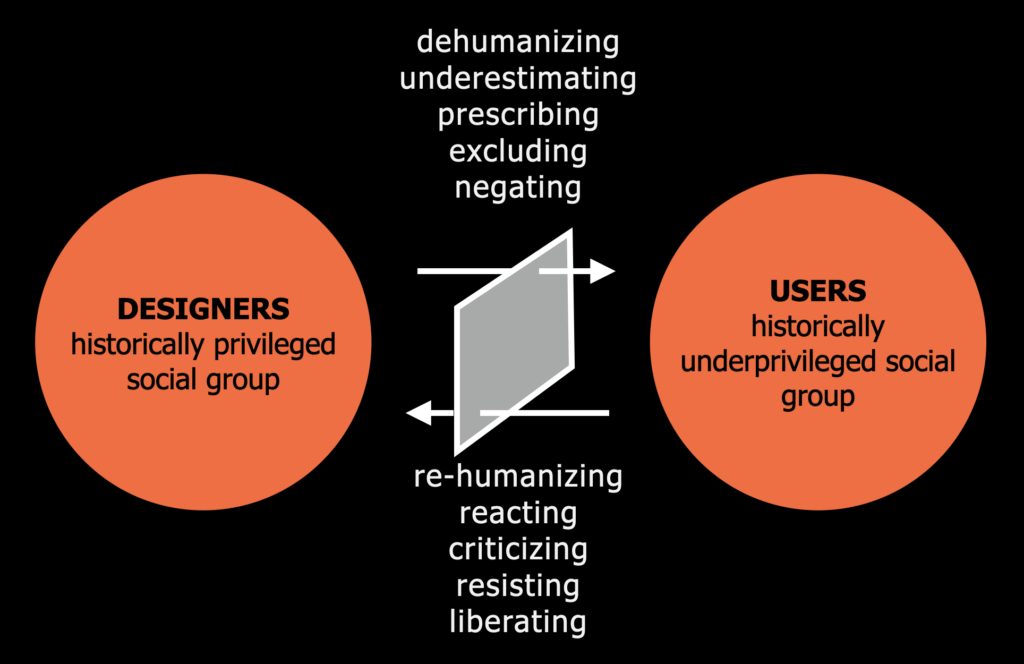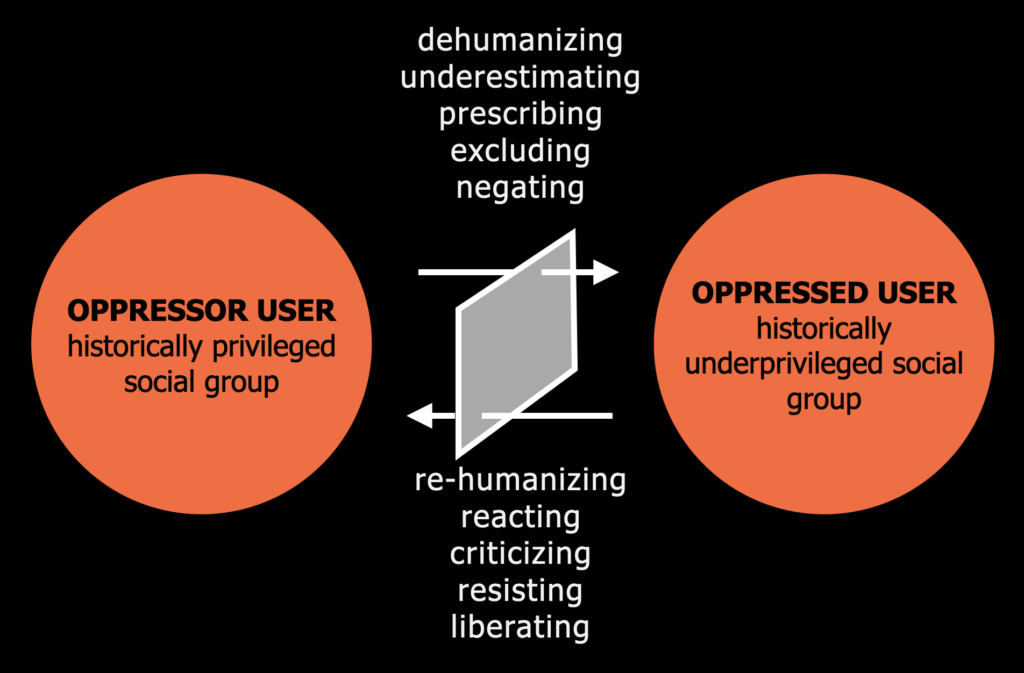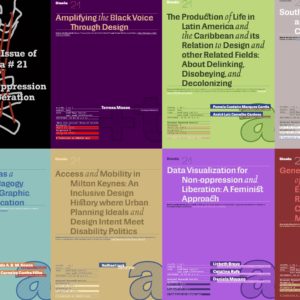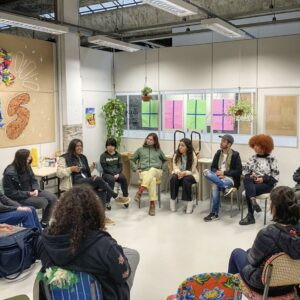Abstract: Álvaro Vieira Pinto, Paulo Freire, and Augusto Boal developed a systemic perspective on oppression based on Frantz Fanon. This perspective frames oppression as a contradiction that builds tension between different social groups. Systemic design can reproduce this contradiction unconsciously or let the oppressed see and recognize their oppressor. This short commentary pushes for a critical approach to dealing with systemic oppression in and through design.
This short talk was part of the panel “Confronting Legacies of Oppression in Systemic Design“, RSDX-RSD11.
Audio
Video
Full transcript
Speaking about my intellectual ancestors, this lecture stems from the contributions of Frantz Fanon, who was a theoretical and practical fighter against oppression in Algeria. He also wrote prolifically about oppression. Álvaro Vieira Pinto, a Brazilian philosopher, built upon his work and developed a cybernetic theory of oppression, which was unfortunately not published in the 1970s, being discovered only in the 2000s. He heavily influenced Paulo Freire, who’s perhaps best known, and also Augusto Boal, who’s a theater dramaturg.
My talk now is a short remark on the understanding of systemic oppression that stems from these authors. They basically describe oppression as a contradiction between a historically privileged social group, the oppressors, and a historically underprivileged social group, the oppressed. The oppressors are doing their things, and the oppressed are reacting to that. It’s a cybernetic loop, as you can see. The oppressors try to dehumanize, underestimate, prescribe what the oppressed should do, and the oppressed try to rehumanize, react, and criticize what the oppressors are doing.

I’ve been developing this notion of user oppression with my research collaborators to hold designers accountable for systemic oppression. Designers have privilege over the means of production, and they shape those means of production, the artifacts that we live by, and, willingly or unwillingly, they oppress users, which are historically underprivileged social groups.

That is why it is difficult to find Black designers. They are oppressed people, and therefore, they become users in the handiness relationship, which is a narrow perspective over technology. Technology, or any kind of artifact mediating oppression, sometimes amplifies the reach of oppression.
Systemic user oppression is how the users reproduce this oppression on their own. They take the position of the oppressors because sometimes, these technologies, these artifacts, these systems, they have biases that favor the oppressor’s behavior, and they oppress another user. For example, a White user who is oppressed in a handiness relationship might become an oppressor in a racial relationship and use a social network to oppress Black users. However, the oppressed users may unite, organize, and fight oppression. Systemic user oppression does not mean oppression is total. There’s always some space for resistance.

If we understand systemic oppression this way, for sure, systemic design will not change the artifact or the system itself because it’s all about the relationship between the people. Vieira Pinto wrote extensively that you cannot take humans outside the loop if you want to understand cybernetics.
To finalize with some words of Vieira Pinto, I would say that systemic design can only contribute to dismantling oppression if the oppressors are held accountable while supporting the oppressed. The system is not the oppressor. You should not mistake the tool of the oppressor with the oppressor. There’s always someone behind the system taking the most benefit from it. Systemic design must criticize and find and make visible the oppressors and also make them accountable for what they have done in the past, but what they are doing in the present and what they will probably do in the future if the current biases in the systems are kept the way they are.
References
Van Amstel, F. M., Noel, L.-A., & Gonzatto, R. F. (2022). Design, Oppression, and Liberation. Diseña, (21), Intro. https://doi.org/10.7764/disena.21.Intro
Gonzatto, R.F. and van Amstel, F.M.C. (2022), “User oppression in human-computer interaction: a dialectical-existential perspective”, Aslib Journal of Information Management, Vol. 74 No. 5, pp. 758-781. https://doi.org/10.1108/AJIM-08-2021-0233
Van Amstel, F., Sâmia, B., Serpa, B.O., Marco, M., Carvalho, R.A.,and Gonzatto, R.F.(2021) Insurgent Design Coalitions: The history of the Design & Oppression network, in Leitão, R.M., Men, I., Noel, L-A., Lima, J., Meninato, T. (eds.), Pivot 2021: Dismantling/Reassembling, 22-23 July, Toronto, Canada. https://doi.org/10.21606/pluriversal.2021.0018
Gonzatto, R. F., & van Amstel, F. M. (2017, October). Designing oppressive and libertarian interactions with the conscious body. In Proceedings of the XVI Brazilian Symposium on Human Factors in Computing Systems (pp. 1-10). ACM, New York, NY, USA, Article 22, 10 pages. DOI: https://doi.org/10.1145/3160504.3160542

